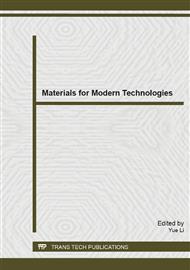p.238
p.249
p.254
p.259
p.263
p.268
p.275
p.285
p.289
Feature Recognition of Corrosion Pit for Pre-Corroded AA 2524 and Statistical Analysis
Abstract:
Corrosion morphology image is one of the most important features for the evaluation of the corrosion damage of materials. By using white light confocal profiler, the corrosion morphologies of AA2524 aluminum alloy specimen are obtained after full immersion to experimental 3.5% salt solution for different time. Through digital image processing, typical corrosion morphology characteristics are extracted, such as the fractal dimension, the depth of pit, the area of pit. By extended 3D box-dimension method, the fractal dimensions of the corrosion surface under immersing time of 24 and 120 hours are determined. The statistical analyses show that the corrosion areas and the characterization parameters ab/2c2 obey Gumma distribution, and the corrosion depth obeys Gumbel, normal, Weibul and log-normal distributions.
Info:
Periodical:
Pages:
263-267
Citation:
Online since:
April 2014
Authors:
Price:
Сopyright:
© 2014 Trans Tech Publications Ltd. All Rights Reserved
Share:
Citation:


